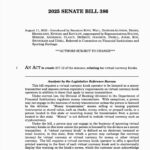Current Bitcoin Market Overview
Bitcoin is currently trading at $108,413, with a 24-hour trading volume of $22.57 billion and a market capitalization of $2.15 trillion. In the last 24 hours, the cryptocurrency experienced a range between $108,262 and $109,453, indicating a period of tight consolidation.
Technical Analysis
The daily chart illustrates a strongly established bearish trend, as bitcoin establishes a lower-high, lower-low structure throughout August, culminating in a notable decline from the mid-month peak around $124,517. Presently, the price hovers around $107,389, with strong red volume exerting further pressure, signaling persistent selling momentum. There has been no emergence of a bullish reversal pattern, and a close below the crucial $107,000 support level is likely to confirm a continuation to the downside. Resistance is layered between $112,000 and $114,000, indicating that only a decisive daily close above $114,000 could indicate a shift in sentiment.
4-Hour Chart Analysis
In the 4-hour chart, bitcoin broke down from $113,473 and has since consolidated within a tight range between $107,000 and $109,000. Volume analysis reveals strong seller dominance, particularly on August 29, when red volume surged during a sharp decline. Candlestick formations, including multiple dojis and small bodies, suggest indecision, but the overall context leans bearish. The failure to maintain above $109,000 implies a potential bear flag formation, which may unravel with another leg lower if there is a breakdown below $107,500.
1-Hour Chart Insights
The 1-hour chart further confirms distribution, with bitcoin attempting a brief relief rally from the $107,389 level before stalling just short of $109,500. Sellers consistently enter on each bounce, forming a descending triangle that indicates additional downside pressure. Volume is light on upward movements and heavy during downward ones, a classic sign of a market bracing for another dip. A short entry near $109,000 with a stop above $110,000 aligns with the short-term bearish structure, while long scalps should be considered only on a rebound from $107,000 with tight risk parameters.
Oscillator Analysis
Oscillator readings support the bearish outlook. The relative strength index (RSI) is at 38, indicating neutral-to-weak momentum. The Stochastic oscillator reads 10, also neutral, while the commodity channel index (CCI) at -118 and momentum at -4,032 both signal potential bullish conditions, hinting at oversold situations. However, the moving average convergence divergence (MACD) shows -1,916, indicating ongoing bearish momentum. Overall, oscillators appear inconclusive but lean towards the continuation of the current trend.
Moving Averages Review
A detailed examination of the moving averages suggests the prevailing bearish perspective. All short- to mid-term exponential moving averages (EMAs) and simple moving averages (SMAs) — from 10 to 100 periods — are significantly above the current price, signaling negative indicators. Notably, only the long-term 200-period EMA at $104,072 and 200-period SMA at $101,265 provide a bullish signal, indicating that while bitcoin trades above historical trendlines, recent momentum is heavily tilted toward the downside. A break below $107,000 with accompanying volume would affirm this trend, whereas a strong close above $114,000 would pave the way for a bullish reversal.
Conclusion
While the current indicators and short-term momentum favor bearish sentiment, long-term moving averages and oversold oscillator readings suggest that a rebound is possible. A confirmed daily close above $114,000 would invalidate the bearish structure and could signal the beginning of a broader recovery.
With price action entrenched in a clear downtrend characterized by lower highs and failed breakout attempts, the prevailing sentiment remains bearish. A sustained decline below $107,000 would likely lead to further declines, confirming a continuation of the downward trajectory toward deeper support zones.



















